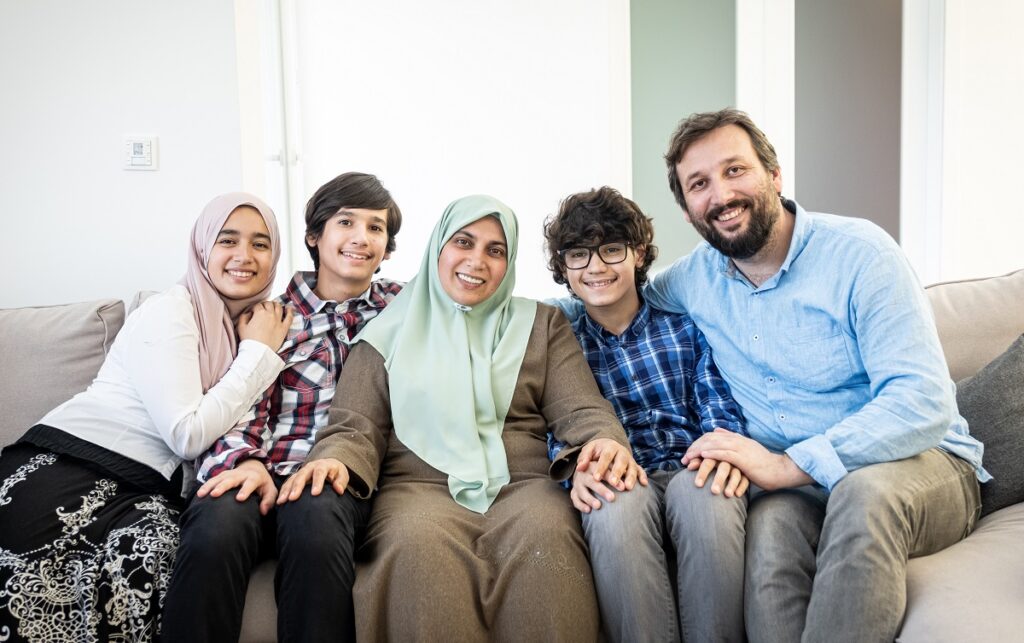
As a citizen or permanent resident of the United States, you can help a relative get a green card. The green card, formally known as a permanent resident card, is the tangible proof that a person may permanently live and work in the U.S. as a permanent resident.
The process begins by filing Form I-130, Petition for Alien Relative. Specifically, the petition establishes a qualifying family relationship exists between you and your eligible relative. Filing the petition also initiates the request for an immigrant visa (green card).
Your relative’s wait for a green card will vary significantly based on the type of relationship and other factors. Immediate relatives may have virtually no wait while some family preference categories will have to wait several years. Your relative’s current residence and immigration status could also have a bearing on how they apply for a green card. Filing the I-130 petition is a critical first step to get your family member get a green card.
Relatives Eligible to Get a Green Card
Form I-130 establishes the family relationship between you and your relative is a qualifying relationship. Only certain relatives are eligible. And depending on the relationship, it will affect the visa wait time. Before you help a relative get a green card, it’s important to understand the difference between the Immediate Relative and Family Preference categories for obtaining an immigrant visa (green card).
Immediate Relatives
The term “immediate relative(s)” is used to define certain immigrant relatives of U.S. citizens. Immediate relatives include:
- Spouses of U.S. citizens
- Children (unmarried and under 21) of U.S. citizens
- Parents of U.S. citizens
Even widows or widowers of U.S. citizens may be eligible if the U.S. citizen filed a petition before his or her death or the widow(er) files a petition within two years of the citizen’s death. Children include biological, adopted and step children. If you petition your parent, you must be 21 years or older.

For immediate relatives of U.S. citizens, immigrant visas are always available. There is no limit. To put it another way, your relative does not need to wait in line for a green card. Since a visa is available right away, immediate relatives who are also in the United States may be able to adjust status to permanent resident instead of waiting in their home country for the consular process.
RECOMMENDED: Green Card Interview Questions for Spouses
Family Preference
Preference categories apply to family members who are not immediate relatives. The visas allotted for these categories are subject to annual numerical limits. That means a wait may be involved but not always. A visa becomes available to a preference category based on the priority date (the date the Form I-130 was filed). Preference categories are grouped as follows:
- First preference: Unmarried, adult sons and daughters (age 21 or over) of U.S. citizens
- Second Preference (2A): Spouses of green card holders, unmarried children (under 21) of permanent residents
- Second Preference (2B): Unmarried sons and daughters of permanent residents
- Third Preference: Married sons and daughters (any age) of U.S. citizens
- Fourth Preference: Brothers and sisters of adult U.S. citizens
Visa availability for the family preference categories can be lengthy in some cases. Some third and fourth preference categories can take several years. However, sometimes categories can be fast. At the time of writing this article, the preference category for spouses of permanent residents (F2A) is current. That means there is no wait; an immigrant visa is immediately available to these relatives to get a green card.
RECOMMENDED: How the Visa Bulletin Works
Your Relative’s Family
For preference categories, your relative’s spouse and unmarried children under 21 years of age can be covered on the same Form I-130 petition. When your relative’s visa number becomes current, his or her spouse and children can get a green card at the same time. The spouse and children are called derivative beneficiaries.
Example: Michael is a naturalized U.S. citizen who files a Form I-130 petition for his married daughter. He can’t file a petition for her husband and children because there is no eligible relationship for a son-in-law or grandchild. However, when his daughter’s place in line allows her to apply for an immigrant visa, her derivative beneficiaries (spouse and children) can apply for immigrant visas at the same time with his daughter.

However, as a U.S. citizen, you must file a separate petition for each one of your direct relatives, including your own children (or step children). If you are petitioning a spouse, you must petition each of your unmarried children under 21 years of age with a separate I-130 petition.
Example: Renée is a U.S. citizen who marries someone with a child. The child will generally qualify as her stepchild if the marriage occurred before the child turned 18 years of age. Additionally, the child must be unmarried and under 21 years of age at the time of filing the petition. Then, the child must continue to be unmarried at the time of immigrating. Renée must file two I-130 petitions: one petition for her spouse and another for the stepchild.
Your Relative’s Wait to Get a Green Card
The immigrant visa category (immediate relative or family preference) will have a significant affect on the time your relative must wait to get a green card. Immigration law gives special consideration to immediate relatives of U.S. citizens, which includes a U.S. citizen’s spouse, unmarried children under 21 years of age, and parents.
- There is no waiting list to immigrate these relatives.
- The U.S. Department of State will invite them to apply for an immigrant visa as soon as USCIS approves your I-130 petition.
- If your petition has been approved, and your relatives are currently in the United States after making a legal entry (and they meet other requirements), they may be able to file applications with USCIS to adjust to permanent resident status.
For family preference relatives, the combination of high demand and the limits set by law on how many people can immigrate each year means your relative may have to wait several years in line while petitions that were filed before theirs are processed. When your relative reaches the front of the line, the U.S. Department of State contacts your relative and invites him or her to apply for an immigrant visa.
To learn more about what happens after filing Form I-130, see the I-130 processing times. You may also be interested in After I-130 is Approved, What’s Next?
During the Wait to Get a Green Card
Filing an I-130 petition does not allow your relative to come to the United States while waiting for an approval. The I-130 petition only establishes the qualifying relationship with that relative. Typically, your relative must continue to wait outside the United States to immigrate legally.
However, if your relative legally entered the U.S and is currently present with a non-immigrant visa (i.e. student, tourist, employee), he or she may stay in the U.S. only while that visa is valid. Your immigrant should depart the U.S. before the visa expires.
RECOMMENDED: 7 Steps to Apply for a Green Card from Outside the United States
Adjustment of Status for Applicants with a Visa Immediately Available
The beneficiary of an I-130 petition may apply for the green card once a visa is available. As mentioned previously, a visa is always available for immediate relatives. If your family member is an immediate relative (spouse, unmarried child under 21 years, or parent) and is already in the United States after having entered legally, they can apply to adjust their status to permanent resident at the same time you file their I-130 petition.
This option may also be available to certain family preference immigrants in categories that are current. At the time of writing, the F2A category is current. In other words, an immigrant visa is immediately available to all F2A beneficiaries.

Individuals that meet these requirements can likely apply for the green card from inside the United States and remain in the U.S. during processing. In fact, adjustment of status applicants can even obtain employment authorization and travel authorization while the application is pending. Applicants must file an adjustment of status package that includes Form I-485, Application to Adjust Status, and several other forms.
There are additional eligibility requirements. Use CitizenPath’s online immigration services to see if your relative qualifies. Our service is free to get started. There’s no obligation to purchase. But you can determine eligibility to help your relative get a green card before proceeding.
In addition to your prepared forms, CitizenPath provides you with a set of personalized filing instructions. Our filing instructions are customized to your answers in the application so you know what to do for your specific situation. The filing instructions provide detailed directions on supporting documents, how to organize your application, and where to mail it. We make it easy.
RECOMMENDED: Typical Forms and Fees for Adjustment of Status
About CitizenPath
CitizenPath provides simple, affordable, step-by-step guidance through USCIS immigration applications. Individuals, attorneys and non-profits use the service on desktop or mobile device to prepare immigration forms accurately, avoiding costly delays. CitizenPath allows users to try the service for free and provides a 100% money-back guarantee that USCIS will approve the application or petition. We provide support for the Adjustment of Status Application (Form I-485), Petition to Help a Relative Obtain a Green Card (Form I-130), Affidavit of Support (Form I-864), and several other USCIS forms.
Note to Reader: This post was originally published on October 18, 2016, and has been modified with improvements.
Want more immigration tips and how-to information for your family?
Sign up for CitizenPath’s FREE immigration newsletter and
SAVE 10%
on our immigration services



